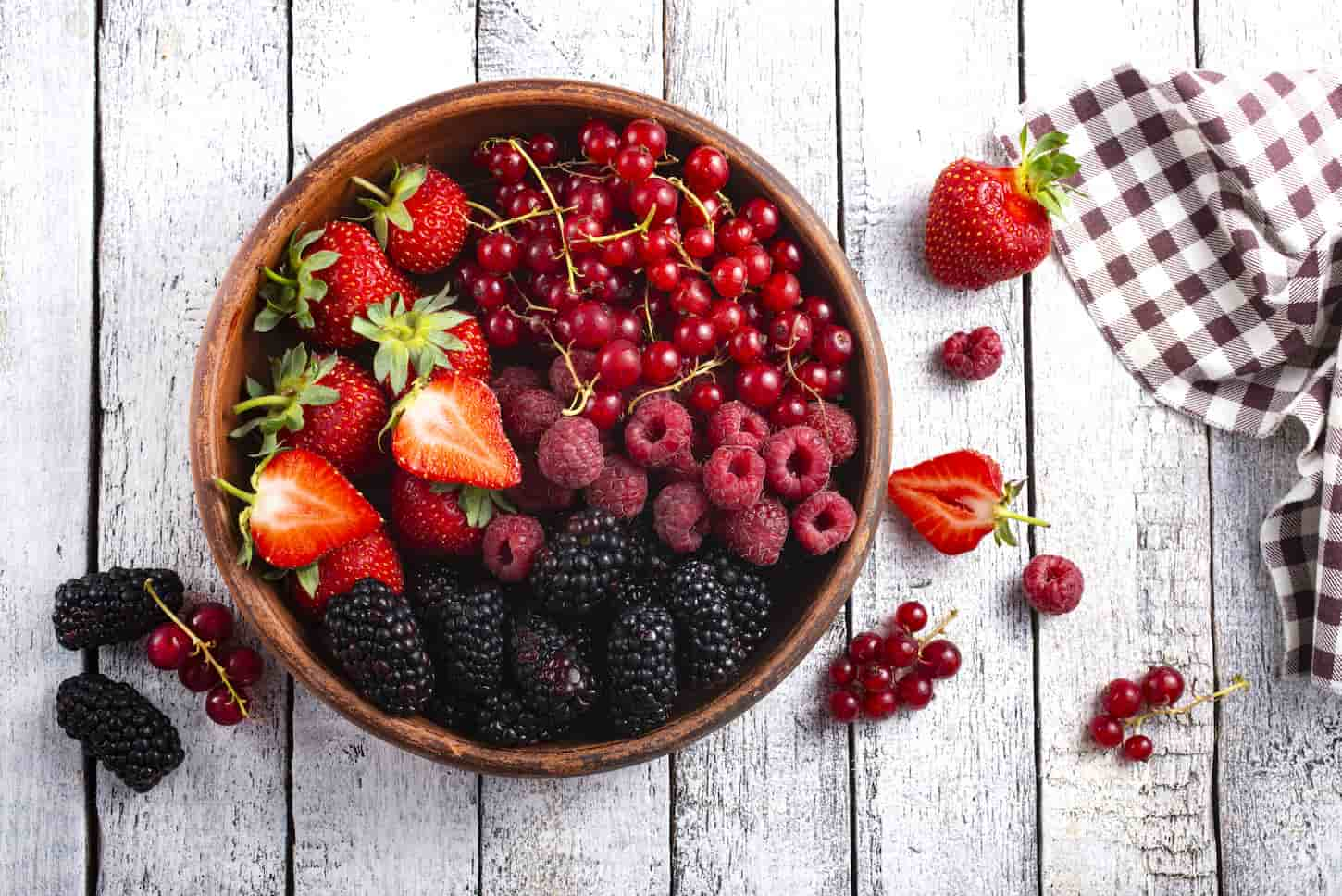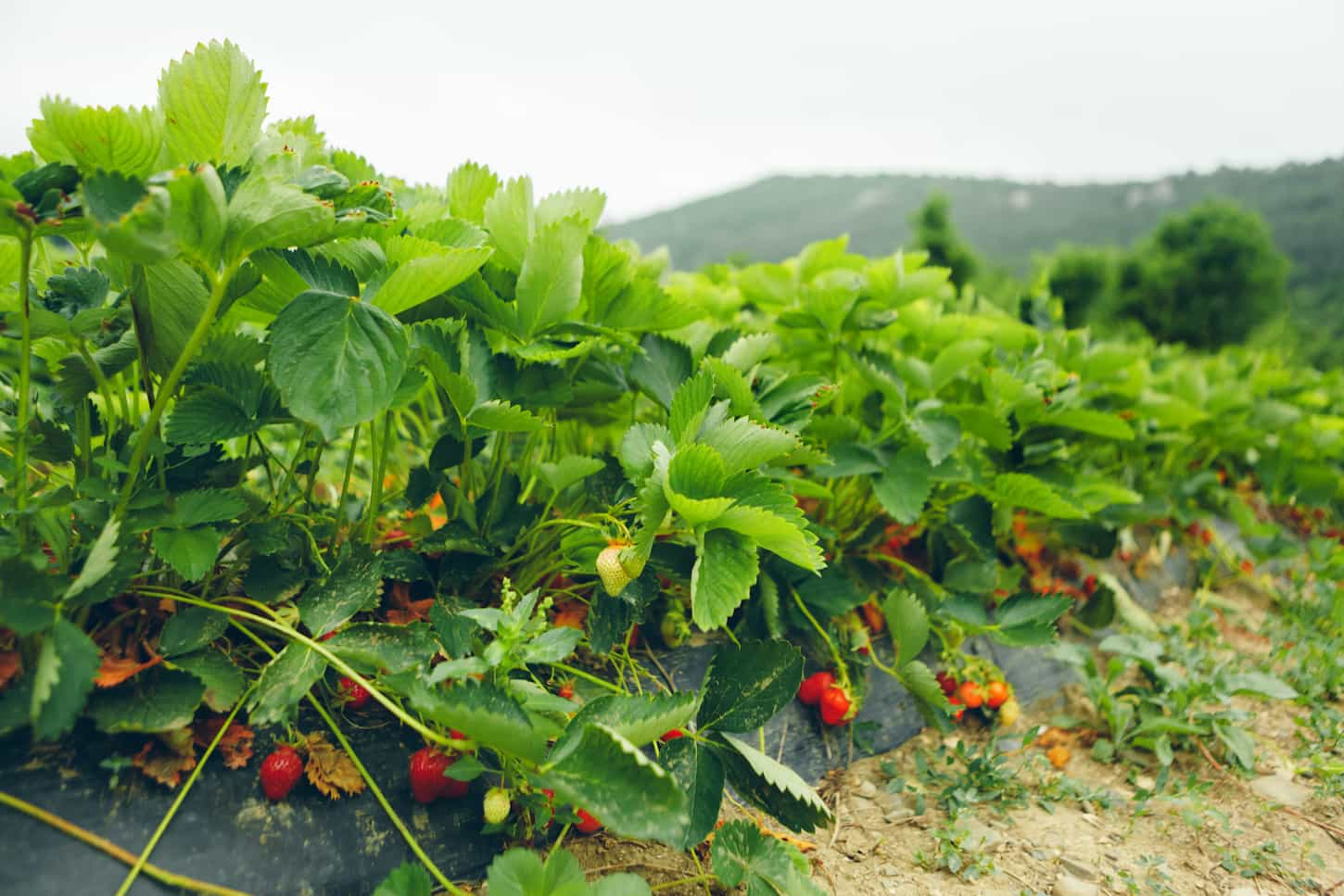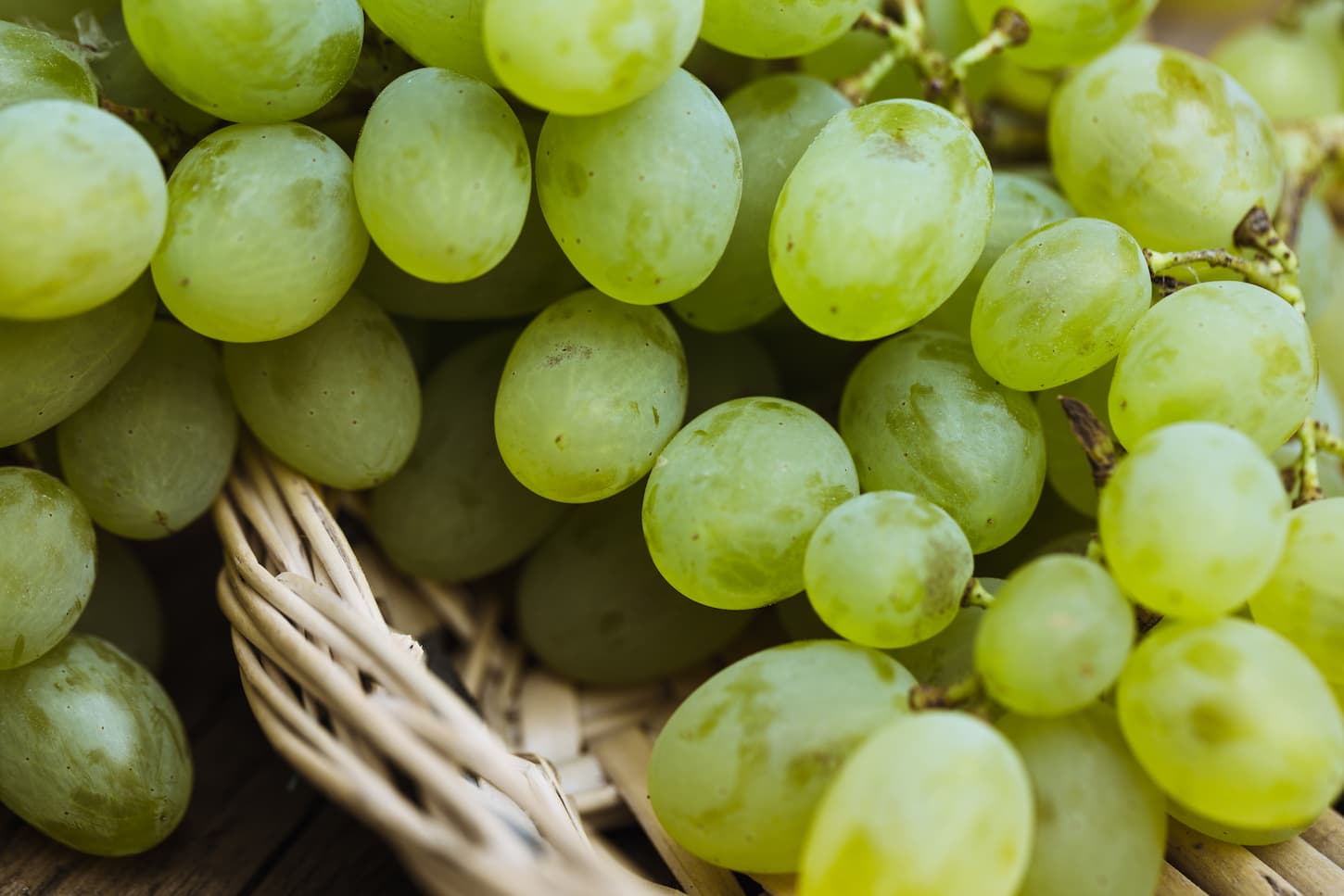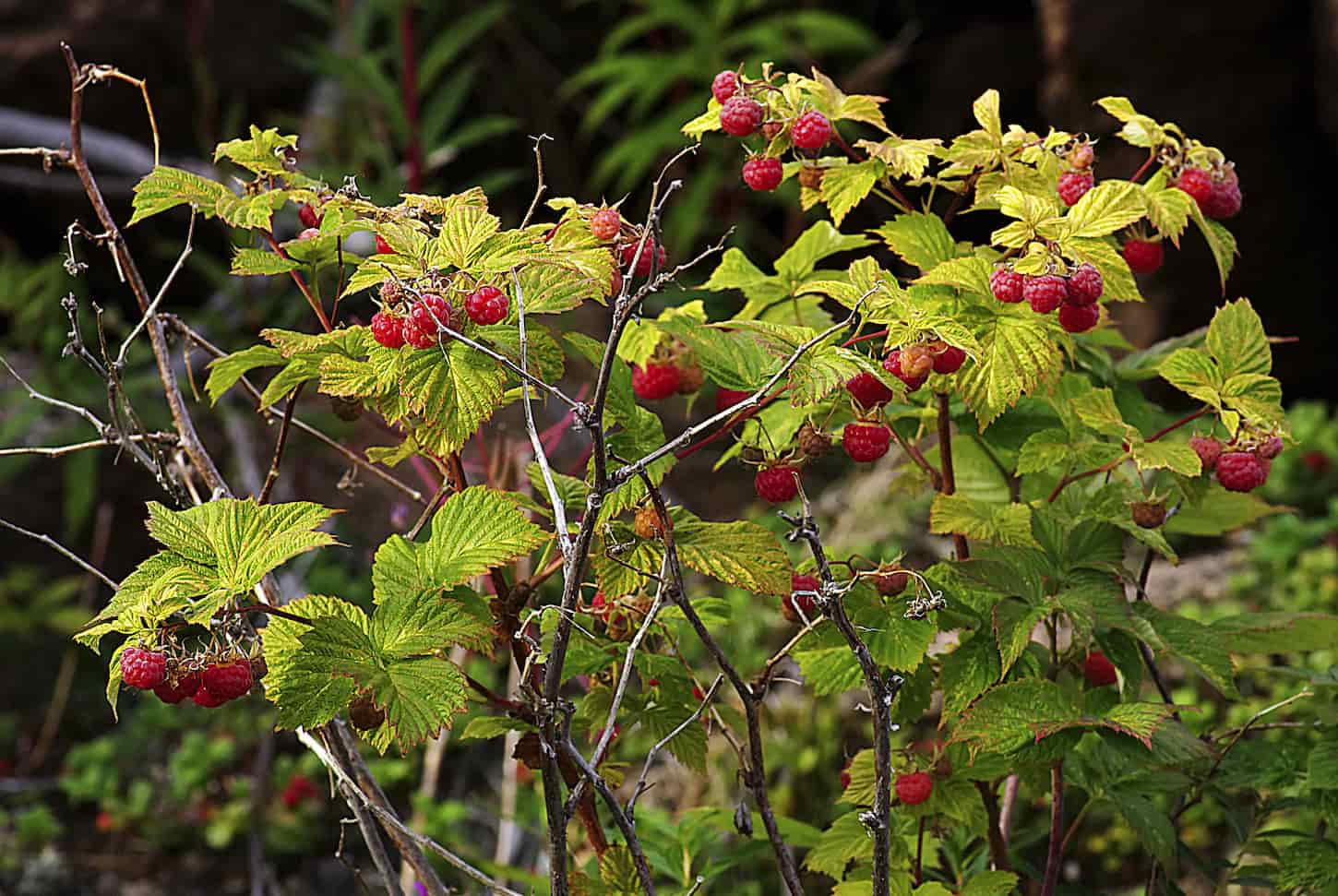Growing berries in our backyard homestead have been one of my all-time favorite things to grow. I love being able to go out and pick fresh berries for my breakfast. Even so, it’s important to know how much sun (or shade) each type of berry wants so that it can grow the best, most delicious fruit possible.
Most berries require at least 6-8 hours of direct sunlight per day, with some berry varieties tolerating shade better than others. The most commonly grown berry types require full sun, which is 6-8 hours (or more) of direct sunlight per day.
| Berry | Light Needs to Thrive | Notes on Light Requirements |
|---|---|---|
| Blackberry | Partial shade to full sun | Can get sun scald if in the hot sunlight too long. |
| Blueberry | Full sun | Some lowbush blueberries can handle partial shade. |
| Boysenberry | Full sun | |
| Cranberry | Full sun | Avoid planting facing south |
| Currant | Partial to moderate shade | Full sun will burn the berries |
| Elderberry | Partial shade | |
| Goji Berry | Full sun | Can tolerate partial shade |
| Gooseberry | Full sun | |
| Grapes | Full Sun | Needs 7+ hours of sunlight |
| Huckleberry | Partial shade | Can survive in full shade |
| Loganberry | Full sun | Can survive in partial shade |
| Mulberry | Full sun | Does well growing between trees |
| Kiwi | Partial sun to full sun | Prefers partial shade |
| Raspberry | Full sun to partial shade | Can experience sun scald with too much heat and light in the day’s heat. |
| Salmonberry | Partial shade to full sun | Prefers some shade |
| Strawberry | Part shade to full sun | Some varieties need more shade |
| Tayberry | Full sun |
Sun is an important component of any plant’s livelihood, but did you know there are berries that would prefer shade instead? Planting tips and guides often suggest a certain minimum amount of sun time. However, you’ll be surprised as to how many berry plants need a fixed time in the shade.
There are various fruit-bearing shade plants, but most of them are of the berry kind. If you have a shade garden, berry plants are a good option to grow. The question is: just how much sun and shade can berry plants tolerate? Keep reading to find out all you need to know about berry plants and their sun and shade tolerance.

How Much Sun Do Berries Need to Grow?
Most types of berries grown by backyard homesteaders require full sun (6-8 hours of direct sunlight), though many may also do just fine in partial shade (4-6 hours of direct sunlight).
Most fruits and vegetables require around six to eight hours of sun each day. Different types of berries will need a particular amount of sunlight to flourish. This ranges from full sun to partial sun, and the spectrum that your berry plant falls under will depend on the species.
How Much Shade Can Berries Tolerate?
Most berries can do fine with some shade, as long as they get at least 4 hours of sunlight. Some berries need at least 6-8 hours of sunlight, though. And a few types of berries require shade to avoid the fruit from being scalded or burned.
It’s no secret that fruit plants love the sun – it’s a vital part of their system. Certain berry plants actually don’t need direct sunshine and would rather grow under shade. Depending on the species, they can withstand hours of shade on end. Shade tolerances range from partial shade to full shade.
How To Define Measurements of Sun & Shade
Now, so many people use the terms “full sun” and “partial shade,” but let’s talk about what those actually mean.
| Term | Hours of light |
|---|---|
| Full sun | 6-8 hours starting from early or mid-morning |
| Partial sun | Max of 4-6 hours of sun |
| Partial shade | A max of 2-4 hours of sunlight per day |
| Full shade | Less than 2 hours of direct sunlight daily |
What is full sun?
If a plant requires full sun to grow, it means that it needs at least six solid hours. For the plant to thrive in full sun, it will need a spot that gets lots of sunshine each day. While sunlight is present for the majority of the day, the periods should begin early or mid-morning.
What is partial sun?
Some plants won’t actually need that much sun. Partial sun is around four to six hours of sun, with the rest of the day being in the shade.
What is partial shade?
Partial shade refers to sun exposure for two to four hours a day. Certain berry plants and mushrooms are edibles that thrive in deep shade.
What is full shade?
You may be surprised to learn that there are even fruits and vegetables that grow in virtually no sun. Edibles that grow and produce in the full shade mean that they receive less than two hours of direct sun.
If you’ve got several trees and you plant things below the trees, this would probably be considered full shade – as your trees are shading the plants below them pretty much all day long.
What is sun scald? Do all berries get it?
Some berry types, especially those with fruitlets, can get sun scalded (or sunburned) if exposed to too much heat or if they get a lot of sunlight during the hottest part of the day. In cases of sun scald, the berry’s fruitlets will be lighter or go completely white.
If your area has triple-digit temperatures during the summer, your berries may be susceptible to sun scald. To prevent sun scald, ensure they get some shade during the hottest part of the day, either from other plants and trees or from a canopy.

What Berries Grow in Full Sun?
In reality, most berries can grow in more than one condition. While some berries thrive in one climate, they can still grow in another (although not as efficiently). Not all berries require a specific amount of sun or shade, but each plant has its preference. The berries that thrive in full sun are blueberries, blackberries, goji berries, tayberries, mulberries, loganberries, grapes, salmonberries, boysenberries, cranberries, and gooseberries.
What Berries Grow in Partial Sun (or Partial Shade)?
It’s evident that most fruits from the berry category flourish under full sun, but there are a few that would prefer the best of both worlds. These berries are strawberries, raspberries, currants, huckleberries, kiwis, and elderberries.
Want to read more about if raspberries will grow in the shade? I’ve got a whole article about them here for you. Give it a read next – I’ve learned a ton about growing raspberries in various areas with differing amounts of light.
What Berries Grow in Full Shade?
Most berries are happier to grow with either full sun or partial sun and shade. But the huckleberry plant is one that can survive in full shade to produce its fruits. Although it can live in full shade, it can also tolerate partial shade.
Other Factors for Shade Tolerance
Shade exposure differs on the bearing. For instance, part shade is usually found on a north-facing slope, or on the north side of a building, as it is shadier than if it were a southern exposure.
Ambient light can also make a difference. For example, a garden with a single big tree is not as shady as an area that has numerous trees, shrubbery, or even buildings around it.
The density of a tree canopy can also vary the shade that a plant underneath it receives. Pine trees have slender needles with a branching pattern that holds foliage at the top of the tree. On the other hand, a broadleaf tree has low-spreading branches, which can cast more shade.
When & Where to Plant Berry Trees
If you have a shaded area in the garden, consider planting a berry plant. Many berries thrive in the shade. However, they will produce even better if they have at least partial sun. Berries and other small fruits don’t usually require as many spaces as full-sized fruit trees.
For instance, blueberry plant may grow up to 12 feet tall and 6 feet wide. While this seems big, it’s smaller in comparison to other fruit trees.
Now, if you don’t like the idea of a giant blueberry bush that’s 12 feet tall, there are dwarf and miniature varieties, too. We’ve got a blueberry bush that’s only a few feet tall – as it’s a hybrid designed for being potted.
Deciding when to plant berries? Early spring is generally best if you’re located in North America. Also, ensure that the soil conditions are optimum. Berry plants aren’t usually fussy and will grow perfectly in average, well-drained garden soil with a lot of sun.
Planting or moving raspberry canes? Make sure you give this article I wrote on planting and moving raspberry canes next. It’ll walk you through the whole process.
Popular Berries & Their Growing Conditions
Take a look at what type of shade and requirements different berries will need to grow. But here’s that table from earlier again for quick reference, too.
| Berry | Light Needs to Thrive | Notes on Light Requirements |
|---|---|---|
| Blackberry | Partial shade to full sun | |
| Blueberry | Full sun | Some lowbush blueberries can handle partial shade. |
| Boysenberry | Full sun | |
| Cranberry | Full sun | Avoid planting facing south |
| Currant | Partial to moderate shade | Full sun will burn the berries |
| Elderberry | Partial shade | |
| Goji Berry | Full sun | Can tolerate partial shade |
| Gooseberry | Full sun | |
| Grapes | Full Sun | Needs 7+ hours of sunlight |
| Huckleberry | Partial shade | Can survive in full shade |
| Loganberry | Full sun | Can survive in partial shade |
| Mulberry | Full sun | Does well growing between trees |
| Kiwi | Partial sun to full sun | Prefers partial shade |
| Raspberry | Full sun to partial shade | |
| Salmonberry | Partial shade to full sun | Prefers some shade |
| Strawberry | Part shade to full sun | Some varieties need more shade |
| Tayberry | Full sun |
Blackberry
Thrives in full sun to part shade. Blackberries are surprisingly low maintenance and will produce fruits with ease. However, they may need to be supported on canes to ensure they are secure to the ground.
Blueberry
Survives in partial shade, and thrives in full sun. In general, blueberries will need full sun. Certain blueberries, such as lowbush ones, can tolerate light shade. Apart from shade tolerance, blueberries are also extremely tolerant to the cold.
Boysenberry
Thrives in full sun. A hybrid of blackberry, raspberry, loganberry, and dewberry, the boysenberry is a popular pie filling thanks to its large purple berries. In addition to requiring six to eight hours of sunlight, boysenberry plants will thrive in organically rich, well-draining soil with a pH of 6.0-7.0.
Cranberry
Thrives in full sun. Apart from needing full sun, the cranberry plant thrives in moist, well-drained, humus-rich soil. Cranberries also require a fresh water supply and acidic peaty soil. Make sure to plant it in a spot that doesn’t get too hot and avoid a south-facing location.
Currant
Thrives in part shade. Both black and red currants will enjoy partial to moderate shade. Try not to plant them in full sun, as it will feel scalded. However, it will need more sun if you’re growing the plant for its fruit. Once ripened, get ready to make currant jelly for breakfast!
Elderberry
Thrives in partial shade. Once the elderflower blooms, it produces purple, luscious berries that are often used to make wine and preserves. The plant itself is adaptable and will grow in most soil types, including wet soils.
Goji Berry
Thrives in full sun, and tolerates partial shade. Easy to grow from seed and cuttings, goji berries are resilient to animal and insect damage. If you’re running out of garden space, goji berries make for a suitable fruit to grow on the edges of your garden. Keep in mind they form Viney bushes, which may require a trellis to support them.
Gooseberry
Thrives in full sun. Gooseberries are popular to plant in Europe, with many of its waist-high shrubs found in the shade of their fruit trees. The sweet-tart flavor of gooseberry has a resemblance to currants – as they are a related species – and its texture pops in your mouth. A gooseberry plant is not fussy about its soil, requiring no pruning, but will prefer moist, well-drained, and fertile soil. You may need to mulch them to avoid weed competition.

Grapes
Thrives in full sun. As producing fruit takes a lot of energy, the grapevine requires sunlight to help it recharge. Depending on how much sun the grapevine receives, the taste of the grapes will change as they ripen. Most grapevines get around seven hours of sunshine to ensure all sides of the plant get some sun (source).
Huckleberry
Survives in full shade, thrives in part shade. Huckleberries are one of the few edibles that can grow in full shade. A huckleberry shrub is often head-high and its fruit tastes similar to blueberries. Numerous native huckleberry species can be found throughout North America, so check your local nursery for the best-suited species to plant in your garden.
Kiwi
Thrives in part shade or part sun. Kiwis, particularly hardy kiwi, can be grown in partial shade. In fact, they prefer it. Make sure to provide the kiwi plant with a trellis for support, as well as some partial sun every now and then.
Loganberry
Survives in partial shade, and thrives in full sun. Similar to blackberries, loganberries prefer full sun to grow. A thornless cross between raspberries and blackberries, a 2-inch berry from an established plant can weigh up to 12 pounds!
Mulberry
Thrives in full sun. For ideal growing conditions, mulberry trees should be planted between trees and in warm, well-draining soil. If you can help it, try not to plant in heavy foot traffic areas, as the fruit stains easily. Mulberries have been said not to travel well, so they’re best when grown at home.
Raspberry
Thrives in full sun to partial shade. Raspberries are a popular choice to grow and will tolerate partial shade. They also establish quite quickly and will produce fruits year after year. Raspberries, and other berries, are also known as brambles, which are the easiest of all backyard fruits. Brambles can get out of control fast, with roots that send up shoots or canes, and tend to live for just two years.
However, most say the flavor of these berries makes it worthwhile. And I’m definitely in that group!
In any case, you can read more about raspberry light requirements in this article I wrote here: Can Raspberry Bushes Grow in the Shade?
Salmonberry
Thrives in full sun to partial shade. Did you know salmonberry bushes can grow up to 6 feet tall and wide? While they will grow in full sun, they should be planted in a shadier spot in the garden. The raspberry-like berries are soft and dry to eat, and its flowers attract hummingbirds and bees.
Strawberry
Thrives in part shade to full sun. Strawberries are the most common and popular fruit that you can find in a home garden. This is due to their low maintenance and very rewarding crops. However, unlike blueberries, raspberries, and currants, strawberry plants don’t live as long. A single strawberry plant is generally at its peak production for only one to three years. Most strawberries like the full sun, but particular species of the fruit, like alpine strawberries, can thrive in partial shade.
Tayberry
Thrives in full sun. While tayberries are not as common in the US as it is in the UK, their berries are aromatic and flavorful. Named after the River Tay in Scotland, tayberries are a cross between a blackberry and a raspberry. Don’t forget to protect it from the severe cold weather by mulching its roots.
How Do You Manage Shade Fruits?
Plants in shaded areas can be more susceptible to disease, as it stays wet longer. By spacing the plants apart from each other, you will allow for more air movement to dry them faster. If your berry plants are under a big tree, you can also try pruning out the lower tree branches to increase the amount of light that comes through. Before you even start planting, make sure to check that the area actually receives the optimum sunshine that your plant needs.

Final Thoughts on Berries and Sunlight
Remember that not all berry plants have the same requirements in terms of the amount of sun and shade. Make sure to check whether your berry fruits prefer to live under full sun, partial sun, partial shade, or full shade before you start planting. While this may be an extra thing to consider in your plant’s growth, the efforts will be worth it once you get to use the delicious fruits of your harvest.
Having berries as part of your homestead will help you enjoy life just that bit more – whether you enjoy making jams, jellies, preserves, syrups, freeze-drying them, dehydrating them, canning them, eating the berries fresh, or some mix of all of the above.
Now, if you want to know the best way to store your berries? Definitely can them as jellies, preserves, jams, and syrups. But then I’d also recommend you do one other thing.
Make sure that you invest in a freeze dryer for storing those delicious berries for however long you want to. Freeze-dried berries (grown in any light levels) can store for years – and they reconstitute just as delicious as when they were fresh. We use and recommend the Harvest Right freeze dryer – which you can check out via that link.
Resources
Learning from your own experience is essential, but learning from others is also intelligent. These are the sources used in this article and our research to be more informed as homesteaders.
- “Backyard Berries.” Gardeners Supply Company, https://www.gardeners.com/how-to/backyard-berries/7250.html
- “So Shady: 10 Crops That Can Be Grown Without a Lot of Sun.” Modern Farmer, https://modernfarmer.com/2016/07/shade-plants/
- “40 Brilliant Berries To Grow In Your Garden.” Misfit Gardening, https://misfitgardening.com/40-berries-to-grow-in-your-garden/
- “How to grow Tayberries.” Pyracantha, https://www.pyracantha.co.uk/how-to-grow-tayberries/
- “How to Grow Cranberries.” Harvest to Table, https://harvesttotable.com/how-to-grow-cranberries/
- “GARDENING 101: FUN IN THE SUN – EXPLORING SUN AND LIGHT EXPOSURE NEEDS.” Flower Power, https://www.flowerpower.com.au/garden-advice/gardening/gardening-101-fun-sun/